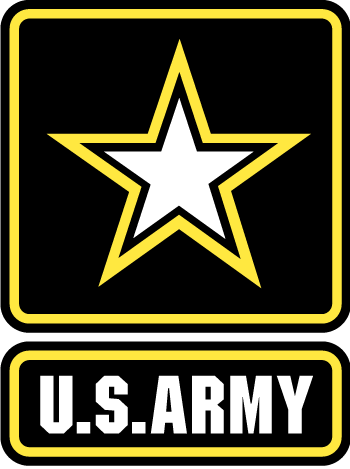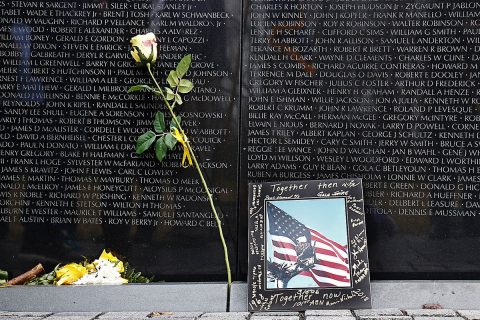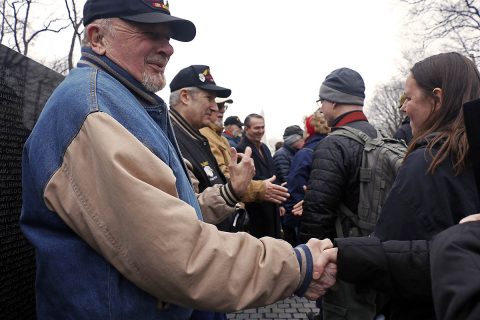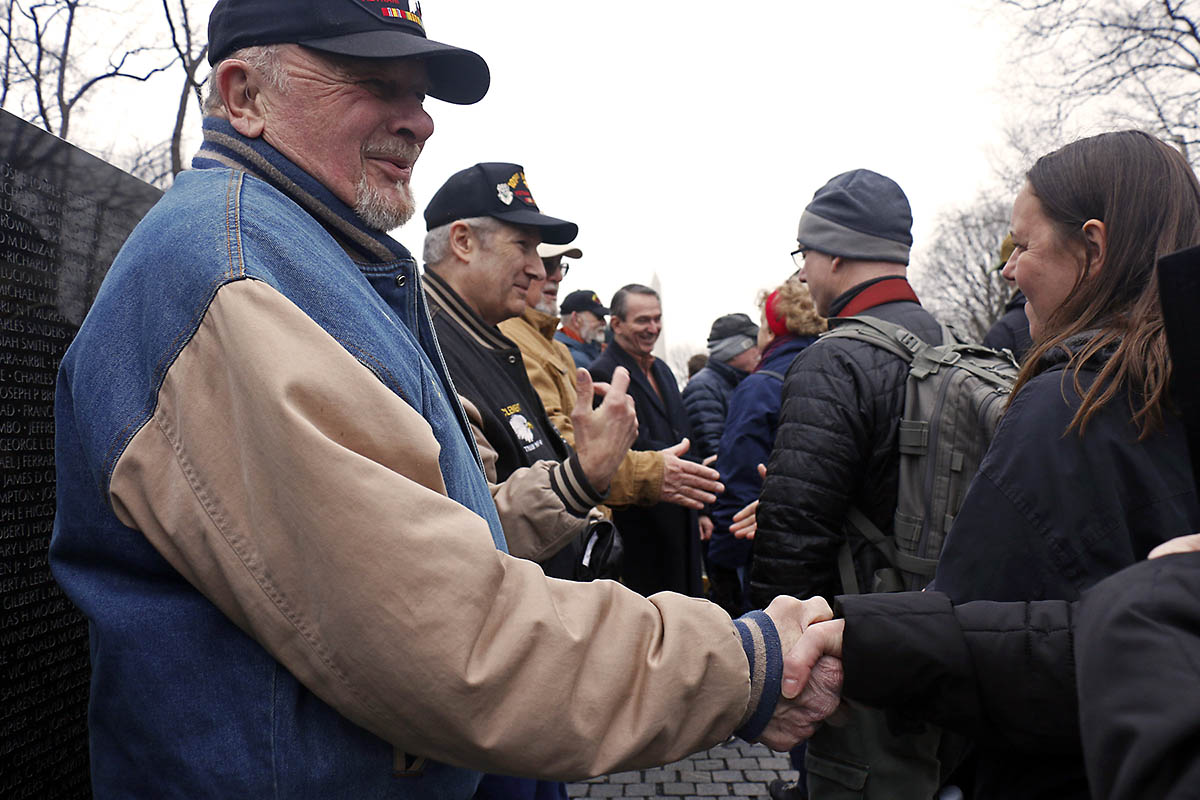Written by Staff Sgt. Paige Behringer
2nd Brigade Combat Team, 10th Mountain Division Public Affairs
 Fort Drum, NY – For 243 years the U.S. Army has been fostering brotherhood among its ranks.
Fort Drum, NY – For 243 years the U.S. Army has been fostering brotherhood among its ranks.
Born of the Army, the “Currahee Brothers” forged lifelong bonds in bloody combat during the Vietnam War, and continue reuniting half a century later.
They may appear as simply a group of old veterans congregating in a hotel lobby somewhere outside of Washington, D.C., laughing, joking and telling stories. Instead of celebrating a day of birth, this brotherhood assembles to observe a solemn anniversary.
Their name comes from 3rd Battalion, 506th Infantry Regiment, 101st Airborne Division, which reactivated in 1967 as a “stand alone” task force to increase American presence in Vietnam.

Every February 19th, the day of their worst battle, any number of Currahees can be seen at the Vietnam Veterans Memorial during a pilgrimage honoring their fallen.
“I come here because the guys on the wall can’t come here,” said Gary “Flint” Purcell, a former Currahee grenadier. “Only we can come here, and we must come here … there must be somebody here. As long as any of us are alive they will never, never be forgotten.”
In less than five minutes, eight Currahees were killed and more than 20 were wounded in an ambush during the 1968 Tet Offensive.
“We all talk about one small block of time in our life, and it made a dramatic change in our life,” said Ed Bassista, former squad leader in the battalion.
Overall 176 names on the wall belong to Currahee Soldiers, Bassista added. Throughout the year, the calendar continues punctuating dates men were lost in combat, marking days until the next winter’s journey to remember together.

“We were here when it was 14 below zero, pouring rain, snow, you name it,” Bassista continued. “There has been somebody coming here every year on February 19th since the 1982 dedication (of the wall).”
This year, the 50th anniversary marked Bassista’s 20th trip to the wall, though the tradition is attributed to another Currahee, Lou “Louie” Oswald.
“(Louie) was the one who started coming here on the 19th,” Bassista continued. “When the wall was being built he would sit up there on the grass with a six pack and watch them build the wall. When the wall was dedicated, he was here.”
Each Currahee has his own reason for the annual voyage commemorating their bond among each other and their fallen brothers.
“It was important not only to see the Vietnam memorial one more time, but to do it with a group of people that I served with,” Burdett added. “So it was some camaraderie to see them, the monument and have it all come together.”
Most of the returning Currahees were assigned to A Co., and trained together for the better part of a year before heading to war in late 1967 aboard the USS General William Weigel.
“These guys here are not good, they’re the best this country can produce,” said Andy Lovy, or “Doc Lovy”, the former battalion surgeon. “I’m very proud to have been a part of the unit.”
Doc Lovy boasted that if his medics brought someone to him alive, they would stay alive.
“I’m not into war, I’m not into fighting, I’m not into any of that,” Doc Lovy added. “If I have to I go, I want to go with the best. I did … None are better than my guys. I’m proud of them.”
For Gale “Caje” Shire, former team leader, going to the wall is about family.

“My brothers in combat are more family than my brothers at home,” Caje added. It works out that way … by these reunions and these gatherings we have become much closer friends and know each other better than we did in combat.”
Bassista said the Currahees knew they could count on each other, from their own fire team to the battalion as a whole.
“After a while in Vietnam it wasn’t so much about God and Country, it was more about keeping my men alive as a squad leader,” Bassista added. “That’s what I did, and I did it to the best of my ability. I’m proud of what I did. It changed my life.”
For Flint it means everything to come to the wall. As a tribute and penance for a young blunder he can never undo, Flint makes wooden eagles for everyone in the battalion who comes to the wall.
For Mike Trant, a Currahee infantryman, the trip to the wall is just the right thing to do.
“A lot of guys didn’t make it, and they have to be remembered,” Trant said. “We were all like 19 years old.”
These brothers now range in age from around 70 to more than 90 years old. Though they seem light hearted and smile greeting each other at the wall, some of their eyes sparkle with tears during a moment of silence honoring and remembering the Currahees who never made it home.
“Our unit, we were special,” Flint recalled. “I don’t want to brag or anything. Somehow we were picked to be special. We love each other.”



